News
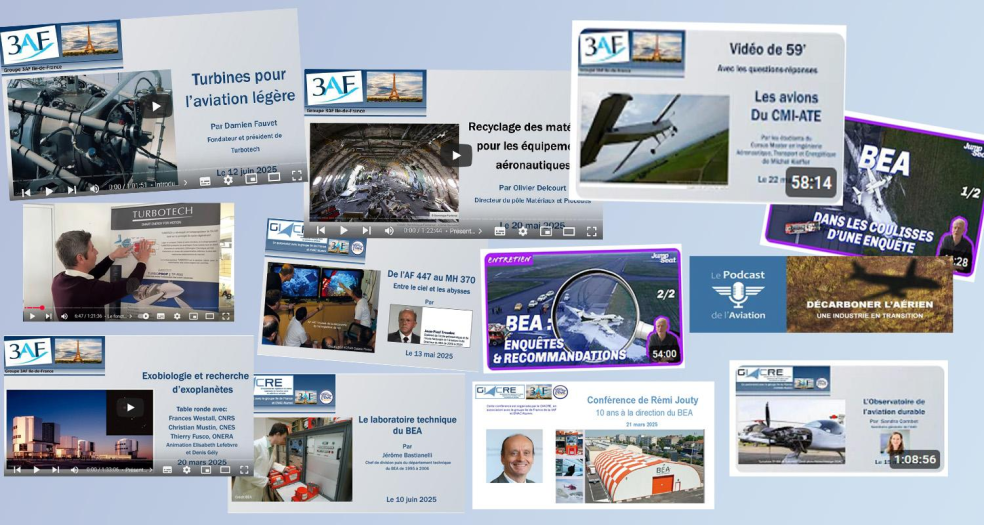
Conferences, reports and podcasts
First-half 2025 conferences, reports and podcasts
Turbotech, Turbines for light aviation, by Damien Fauvet
Recycling materials, by Olivier Delcourt
Exobiology and the search for exoplanets
Training: the aircraft of CME-ATI students, under the aegis of Michel Kiefer
The BERTIN air cushion train, by Daniel Ermisse
The BEA's technical laboratory by Jérôme Bastianelli
From AF 447 to MH 370, between the sky and the abyss, by Jean-Paul Troadec
Rémi Jouty, 10 years at the head of the BEA
BEA :2 shows on Jumpseat channel
How do you investigate a crash?
Sustainable development observatory, by Sandra Combet
Decarbonizing air travel, podcast in 5 episodes
Turbotech, Turbines for light aviation, by Damien Fauvet
Founder and President of TurboTech, Damien Fauvet joined LABINAL and then HISPANO-SUIZA, working successively on the maintenance of flight control actuators and power transmissions for CFM-56 engines. Having produced a number of turbojet prototypes for model aircraft, in 2006 he began work on the design and manufacture of a regenerative-cycle turboprop engine; the prototype will be in operation in 2009. Damien Fauvet showed why and under what conditions the Turbine solution is interesting and justified.
Jumpseat & Aérobuzz report
Aérobuzz journalist Fabrice went to Toussus-le-Noble to take you on a tour of @turbotech-aero2231 's facilities, meet the bosses and employees, as well as @FFAeronautique, the DGAC, the Sustainable Aviation Observatory and the pilot in charge of the turbine's flight tests.
Recycling materials, by Olivier Delcourt
The overall reduction in the industry's carbon footprint, and tensions over the supply of certain materials, mean that these constraints have to be taken into account right from the design stage, and that recycling capacities have to be increased during the production phases. For SAFRAN, these challenges are taken into account whatever the nature of the materials used. This presentation provides an overview of the current situation and outlook in this field. Olivier Delcourt is Director of the Materials and Processes Division at SAFRAN TECH, and President of IRT M2P.
Exobiology and the search for exoplanets
Exobiology, or astrobiology, is the study of life in the Universe. It draws on several scientific disciplines to understand how life appeared on Earth, how it evolved and whether it could have taken shape elsewhere in the Universe. It is based on experiments on the ground and in space, and on the observation and analysis of rocks on Earth and on other planets. The history of this scientific field is still young, but it experienced a major boom with the conquest of space. Scientists are contributing their knowledge of geology, chemistry, biology, physics and astronomy, while at the same time developing increasingly powerful space observation tools to scan and track down areas beyond the solar system that could reveal the presence of exoplanets.
This morning session covered the history of exobiology, exciting discoveries and recent advances, and upcoming space projects related to exobiology and the search for exoplanets.
Training: the aircraft of CME-ATI students, under the aegis of Michel Kiefer
Students on the Master's degree course in Aeronautical Transport and Energy Engineering at Paris Nanterre University presented the aircraft produced during their course. Beyond the design of these aircraft, the students are developing the production, ground testing and flight testing of the 5 hybrid aircraft with non-linked engines, a demonstrator of a particularly economical regional transport aircraft.
These industrialized aircraft are designed to reduce costs by simplifying systems, and comply with the key points of CS23 aeronautical regulations.
The BERTIN air cushion train, by Daniel Ermisse
The aerotrain, a vehicle propelled on a cushion of air guided by a special T-shaped track, is a French invention.aise (registered on July 13, 1962), the result of a succession of discoveries and ideas that began in 1957. In February 1966, a first prototype reached a speed of 200 km/h between Gometz-la-Ville and Limours, and a second succeeded in reaching 422 km/h on January 22, 1969. Several prototypes followed until the project was abandoned in 1974. Daniel Ermisse recalled the twists and turns and details of this industrial adventure. He was a test pilot at Bertin.
Series of lectures on the BEA
The BEA technical laboratory by Jérôme Bastianelli
Jérôme Bastianelli is a graduate of the École Polytechnique and the École Nationale de l'Aviation Civile (ENAC). He began his career at the BEA in 1995, first as head of division, then of the technical department. In 2006, he was appointed rapporteur to the French Court of Auditors.
At the beginning of the 1990s, the BEA laboratory was still in its infancy, created and run by Jean-Christophe Antoine. In the mid-1990s, it was still of modest size when Jérôme Bastianelli took charge. Because of its recent creation, the laboratory still often had to rely on its military counterpart, the RESEDA (Restitution des enregisturs d'accidents) flight test center at Brétigny-sur-Orge, as well as on CEAT in Toulouse and CEPr in Saclay.
From AF 447 to MH 370, between the sky and the abyss, by Jean-Paul Troadec
Jean-Paul Troadec is a graduate of the École Polytechnique and the École Nationale de l'Aviation Civile (ENAC). He began his career in the certification office of the Air Transport Division (DTA), then was put in charge of the Airbus and CFM56 engine programs at the Civil Aviation Programs Division (DPAC).
In 2005, at the request of the French Minister of Transport, Jean-Paul Troadec left Civil Aviation to create the Établissement public de sécurité ferroviaire (EPSF), the national railway safety authority . (EPSF) , the national rail safety authority, whose principles are inspired by the tried and tested methods used in civil aviation.
Thanks to his extensive aeronautical experience, Jean-Paul Troadec was appointed Director of the BEA in October 2009, at a time when two investigations into major air disasters had been underway for less than six months: the crash of flight AF447 Rio de Janeiro-Paris, and the crash of the Yemenia Sanaa-Moroni flight.
Rémi Jouty, 10 years at the head of the BEA
Rémi Jouty is a graduate of the École Polytechnique and the École Nationale de l'Aéronautique et de l'Espace. He began his career in aeronautical research (NASA then DGA). He joined the DGAC in 1995 to head the international certification teams for the A330, A340 and A380, then oversaw the transfer of this activity to EASA. He also provided technical support to the BEA investigation into the Concorde accident.
He first joined the BEA from 2006 to 2008 as Head of Investigations. During this period, he formalized investigative work by setting up the organization and procedures manual for the conduct of investigations. He returned to the DGAC as Deputy Director of the DSAC, where he took part in the quality process for risk assessment and management.
Returning to the BEA as Director, in just over a year he was confronted with two major disasters: the Air Algérie accident in the Malian desert in Mali, where the BEA provided substantial support to the Malian authorities' investigation, and the suicide of the Germanwings co-pilot in the Alps. These two investigations will be carried out under tight deadlines and in a context of strong social pressure.
It is also committed to ensuring that the BEA's role and prerogatives are taken into account in national crisis management plans, and is working within ICAO working bodies to ensure that international standards evolve so that all safety investigations conclude with the publication of a report.
BEA :2 shows on Jumpseat channel
And on this subject 2 programs on the Jumpseat channel - Aérobuzz, Behind the scenes at the BEA with the participation of Pierre-Yves Huerre, current director of the BEA.
How do you investigate a crash?
In this interview conducted by Gil Roy, Pierre-Yves Huerre (BEA Director) and Thierry Rozec (Senior Investigator) discuss the role of the Bureau d'Enquêtes et d'Analyses in aviation safety. From crisis management to international missions, from investigation methods to relations with victims, this exclusive interview explores the behind-the-scenes aspects of aircraft accident investigation. A rare dive into a technical, human and rigorous world.
Surveys and recommendations.
The second part of the interview, conducted by Gil Roy, with Pierre-Yves Huerre (BEA Director) and Thierry Rozec (Senior Investigator) looks at the role of the Bureau d'Enquêtes et d'Analyses in aviation safety. From crisis management to international missions, from investigation methods to relations with victims, this exclusive interview explores the behind-the-scenes aspects of aircraft accident investigation. A rare dive into a technical, human and rigorous world.
Decarbonizing air transport
Sustainable Development Observatory, by Sandra Combet
The lecture was given by Sandra Combet, General Secretary of this structure, which is part of the French Civil Aviation Authority.
The Observatoire de l'Aviation Durable (OAD) was created to make data on the climatic impact of air transport accessible in a single location. The Observatory's raison d'être is to open up and share knowledge. In the field of decarbonization, it helps to shed light on the network of French innovation initiatives in the territories.
The conference is available on request.
Decarbonizing air travel, podcast in 5 episodes
1/ The airline industry in transition,
2/ Major players face the challenge of ecological transition,
3/ The low-carbon aircraft and its environment,
4/ Towards a new skills system,
5/ Three visions for a low-carbon sky
A Journal de l'aviation production
ext block. Change the text.


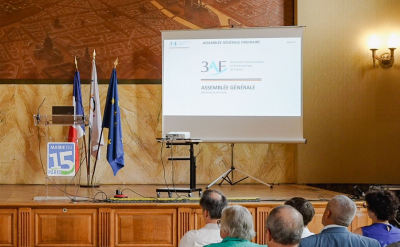
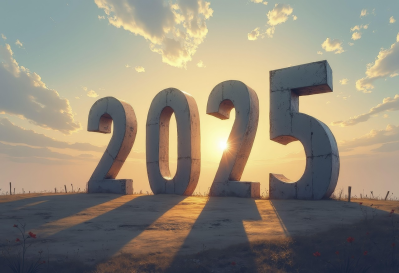



No comment
Log in to post comment. Log in.